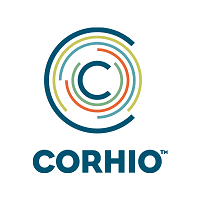 Community Health Partnership, an Accountable Care Organization in the Colorado Springs area, is utilizing data from the CORHIO health information exchange for care management and patient interventions.
Community Health Partnership, an Accountable Care Organization in the Colorado Springs area, is utilizing data from the CORHIO health information exchange for care management and patient interventions.
Community Health Partnership in Colorado Springs is a large Regional Care Collaborative Organization (RCCO) working in four counties with more than 40 provider practices, area hospitals, community mental health centers, public health, EMS and others. They began enrolling Medicaid beneficiaries in 2011 and immediately set out to solve technology-related problems including insufficient claims data for timely patient intervention, difficulty identifying dual-eligible patients, and struggles with obtaining data for out-of-network encounters.
Supplementing Claims Data
In the beginning, Community Health Partnership relied on Medicaid claims data to achieve key performance indicators (KPIs), such as post-partum check-ups with new mothers. “For post-partum check-ups, we were having to do that off of claims data, which is impossible because the claims data is 3-4 months dated and the window for having the post-partum check was within a month,” says Jim Calanni, Chief Technology Officer at Community Health Partnership.
To work around the untimeliness of claims data, for certain purposes, Community Health Partnership worked with CORHIO (@CORHIO) to developed customized reports using HIE data to identify new births in their member population. Community Health Partnership’s member files are sent to CORHIO daily and automatically matched to find recent emergency department admits and discharges from participating hospitals in the network. Care managers use this real-time information for patient follow-up with the new mothers. Now with less reliance on the claims data, the process has been sped up and Community Health Partnership has improved this KPI.
Dual Medicare/Medicaid Patient Identification
As the Medicaid administrator for the second largest population in Colorado, it’s a contractual requirement for Community Health Partnership to complete service coordination plans for all Medicaid/Medicare eligible members within a short timeframe after an emergency department event. However, this information wasn’t readily available.
“Our care managers had certain data resources, like hospital discharge information, and state information, but it was too late, so we were having a hard time knowing when dual patients were having an event,” says Kim Ball, HIE Manager at Community Health Partnership. “On a typical monthly basis, our care coordinators looking at duals were getting notices on 6-12 patients a month. We suspected this was not accurate, but our team couldn’t figure out how to get better information.”
Community Health Partnership turned to CORHIO to develop an easy way to identify dual Medicare/Medicaid patients by applying Medicaid and Medicare ID numbers across their patient roster. This joint effort to identify dual-eligible patients increased visibility from an average of 10 to 300 patients in the first month alone. Now, Community Health Partnership is working with their care managers on improving care coordination for these previously unidentified patients.
Customized Encounter Notifications
Without visibility into real-time patient encounters that happen throughout the state, Community Health Partnership’s care managers can be unaware of recent hospital visits and changes in condition for their population of patients. So they worked with CORHIO to identify those patients who need intervention or follow-up from care using recent encounter and lab data. For example, they developed quantitative A1C reporting, including actual lab values, so care managers can monitor diabetes patient progress.
“We see much more value coming in these more timely reports from CORHIO,” says Ball.
Ongoing Partnership
Community Health Partnership’s goal is to achieve a fully interconnected healthcare community, meaning that every acute care hospital, outpatient clinic, physician practice and a multitude of ancillary providers in the Pikes Peak Region will be exchanging data. This will require a significant outreach effort in 2016 and beyond, combined with strong, continuous and long-term technical support and infrastructure provided by CORHIO. “It’s been a true partnership and collaborative effort,” says Calanni.
“CORHIO is a great partner and we’re learning from each other as we go. We’re not just putting out data, we’re making it actionable,” says Ball. “Different teams here need different datasets. We need to make it actionable for the people who need it.”
